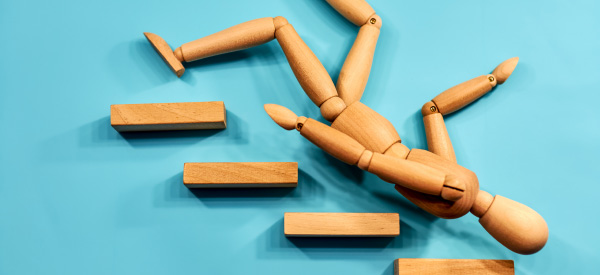Preventing Slips, Trips, & Falls
Slips, trips, and falls are one of the most common types of employee injuries in healthcare facilities. Although some factors, such as walking surface design type are beyond the control of most employees, there are areas that everyone should be aware of and some actions that all employees can take to help prevent slips, trips, and falls.
Slips, trips, and falls may be due to the following factors:
Surface composition/condition/changes
-Foreign substances (i.e., spilled food/liquids) or wet floors near sinks, in kitchens, and other walk areas
-Elevation changes, including the use of ladders/stools
-Obstructions (such as extension cords or boxes in walkways)
-Visibility changes (such as from burnt-out light bulbs)
-Human factors (such as improper footwear or the physical/mental condition of a person)
-Unusual factors (such as seasonal decorations or other temporary changes that may be a distraction)
What can you do to help prevent slips, trips, and falls?
-Promptly report any damaged or slick walk areas inside or outside the facility, including greasy/slick flooring in kitchens and restrooms; be aware of surface inclines, steps, wet grass
-Clean up spilled liquids yourself or stand by the spill and direct someone to get a floor sign or wipes if you fear leaving the spill unattended
-Use available wet floor signs, but remove them when the floor is dry
-Make sure any ladder or stool you climb is in good condition and you are safely climbing using 3 points of contact at all times with your feet and hands
-Remove any item that is obstructing the walk area of yourself or others
-Report burnt-out lighting inside or outside of the facility
-Wear slip-resistant footwear and replace your footwear as the heel surfaces begin wearing
-Remain alert to your surroundings at all times, watching both your path forward and the walking surface
-Take particular care when walking during times when you may not be feeling well
-Avoid the use of cell phones when walking inside or outside, particularly when climbing up/down stairs
-Watch for elevators that do not stop evenly with the walking surface when the door opens
Common Slip, Trip & Fall Hazards
1. Contaminants on the floor 6. Inadequate lighting
2. Poor drainage 7. Staircases
3. Indoor—uneven surfaces 8. Stepstools and ladders
4. Outdoor—uneven surfaces 9. Trip hazards (loose cords & cluttered walkways)
5. Weather conditions 10. Improper use of floor mats
Source: NIOSH (National Institute for Occupational Safety & Health)
Other Facts:
- Slips, trips and falls make up 66% of all health care workers comp claims.
- Slips, trips and falls cause nearly 700 fatalities per year.
- Over 800,000 patients a year are hospitalized because of a fall injury, molst often because of a head injury or a hip fracture.

